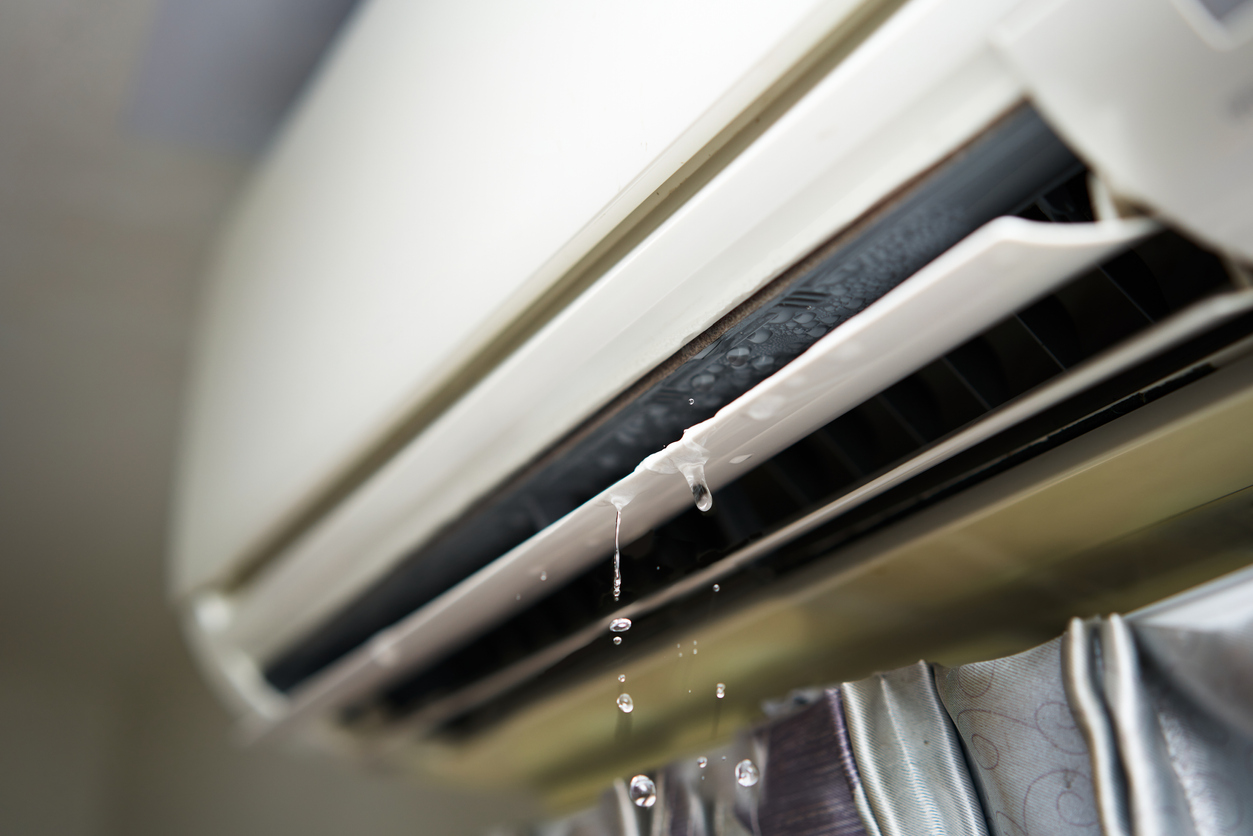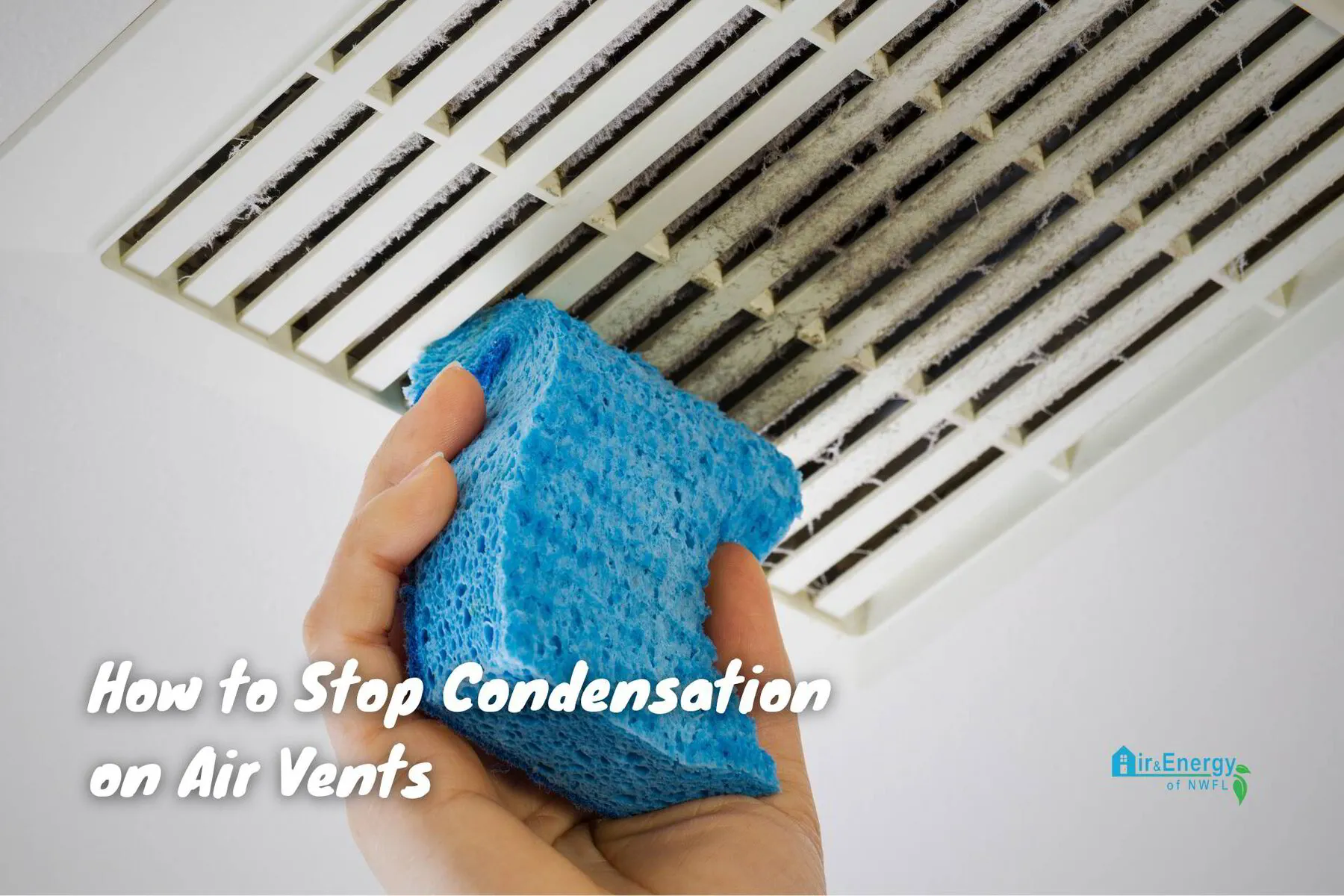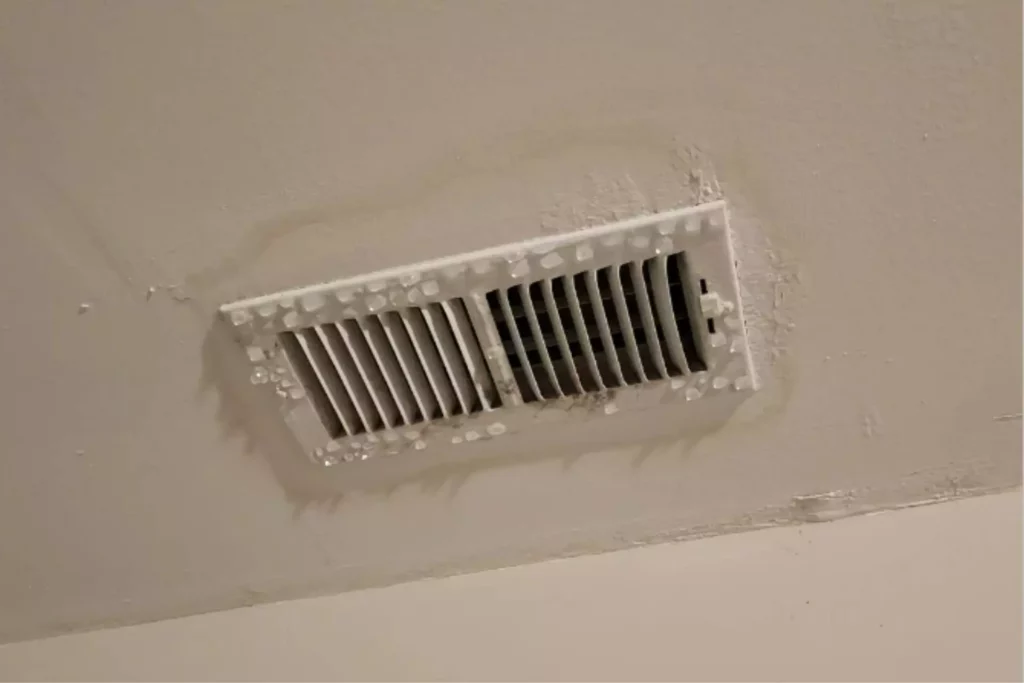Why Is There Condensation On My Air Conditioning Vents

Understanding Condensation on Your Air Conditioning Vents: A Comprehensive Guide
Seeing condensation on your air conditioning vents isn't just a cosmetic issue; it's a symptom of underlying problems that, if left unaddressed, can lead to significant damage and decreased system efficiency. This guide, designed for HVAC professionals, students, and informed homeowners, will delve into the causes of condensation, its potential consequences, and how to effectively resolve it.
The Science Behind Condensation
Condensation occurs when warm, moist air comes into contact with a cold surface. The air temperature drops, reducing its ability to hold moisture, and that excess moisture transforms into liquid water on the cold surface – in this case, your AC vents. This is the same process that forms dew on grass or fog on a cold mirror.
Key Culprits: Why Your Vents Are Sweating
Several factors contribute to condensation forming on AC vents. Identifying the root cause is crucial for effective remediation.
- High Humidity: Elevated humidity levels in your home create a greater moisture load in the air. This is the most common cause, especially in humid climates. Statistics from the Environmental Protection Agency (EPA) indicate that indoor humidity levels should ideally be between 30% and 50%.
- Insufficient Insulation: Poorly insulated ductwork allows the cold air within the ducts to cool the vent surfaces significantly. The greater the temperature difference between the vent and the surrounding air, the more likely condensation is to occur.
- Air Leaks: Leaks in ductwork, especially in unconditioned spaces like attics or crawl spaces, allow warm, humid air to infiltrate and condense on the cold duct surfaces. According to the Department of Energy (DOE), duct leakage can account for over 30% of energy loss in a typical home.
- Poor Air Circulation: Stagnant air around the vents prevents the moisture from evaporating, increasing the likelihood of condensation.
- Oversized Air Conditioner: An AC unit that's too large for your space will cool the air too quickly, leading to short cycling. This prevents the unit from properly dehumidifying the air, resulting in higher humidity levels and increased condensation risk.
- Blocked or Dirty Air Filter: A clogged filter restricts airflow, reducing the cooling efficiency of the system. This can lead to colder vent temperatures and, consequently, more condensation.
The Consequences of Unaddressed Condensation
Ignoring condensation on your AC vents can lead to a cascade of problems that impact your health, comfort, and the longevity of your HVAC system.
- Mold Growth: The damp environment created by condensation is a breeding ground for mold and mildew. Mold spores can trigger allergies, asthma, and other respiratory problems. Remediation can be costly, averaging between $500 and $6,000 according to HomeAdvisor.
- Water Damage: Constant dripping from vents can damage ceilings, walls, and flooring. This can lead to expensive repairs and compromise the structural integrity of your home.
- Reduced Energy Efficiency: Condensation on ductwork can degrade insulation and create thermal bridges, leading to energy loss and higher utility bills.
- Compromised Air Quality: Mold and mildew growth associated with condensation contaminate indoor air, affecting the health and well-being of occupants.
Troubleshooting and Solutions: A Step-by-Step Guide
Addressing condensation requires a systematic approach. Here's a step-by-step guide for diagnosing and resolving the issue:
- Inspect the Vents and Ductwork: Look for signs of visible moisture, mold growth, and damaged insulation.
- Check Humidity Levels: Use a hygrometer to measure the humidity levels in your home. If they're consistently above 50%, consider using a dehumidifier.
- Examine the Air Filter: A dirty or clogged air filter restricts airflow and reduces cooling efficiency. Replace the filter regularly, typically every 1-3 months.
- Seal Air Leaks: Inspect ductwork for leaks and seal them with duct sealant or metal tape. Pay close attention to joints and connections. Consider having a professional perform a duct leakage test.
- Improve Insulation: Add insulation to ductwork, especially in unconditioned spaces. Ensure the insulation has an appropriate R-value for your climate zone.
- Address Air Circulation: Ensure that furniture isn't blocking vents and that air can circulate freely around them.
- Consider a Whole-House Dehumidifier: If high humidity is a persistent problem, a whole-house dehumidifier can effectively control moisture levels throughout your home.
- Consult an HVAC Professional: If you've tried these steps and the condensation persists, it's time to call a qualified HVAC technician. They can diagnose more complex issues, such as an oversized air conditioner or refrigerant leaks.
The HVAC Professional's Role: Career Paths and Certifications
For aspiring and seasoned HVAC professionals, understanding and resolving condensation issues is a critical skill. The field offers diverse career paths, from installation and maintenance to system design and energy auditing.
Career Paths:
- HVAC Technician: Install, maintain, and repair HVAC systems. The Bureau of Labor Statistics (BLS) projects a growth rate of 6% for HVAC mechanics and installers from 2022 to 2032. The median annual wage for HVAC technicians was $51,900 in May 2022.
- HVAC Installer: Focus on installing new HVAC systems, including ductwork and ventilation.
- HVAC Service Technician: Specialize in diagnosing and repairing existing HVAC systems.
- HVAC Sales Engineer: Design and sell HVAC systems for commercial and industrial applications.
Essential Certifications:
- EPA 608 Certification: Required for handling refrigerants. This certification demonstrates competency in refrigerant recovery, recycling, and reclamation.
- NATE Certification (North American Technician Excellence): Validates the knowledge and skills of HVAC technicians. NATE-certified technicians are often preferred by employers and command higher salaries. NATE offers certifications in various specialties, including installation, service, and efficiency.
- HVAC Excellence Certification: Another reputable certification program that assesses the technical skills of HVAC professionals.
Many vocational schools offer certificates in HVAC systems which can be completed in as little as six months. Indeed.com estimates a certificate can lead to a median salary of $54,000 per year.
Real-World Example:
Consider Sarah, an HVAC technician who started as an apprentice. She earned her EPA 608 certification and then pursued NATE certification. Through continuous learning and hands-on experience, Sarah became a specialist in diagnosing and resolving complex HVAC issues, including condensation problems. She now leads a team of technicians and earns a significantly higher salary than when she started.
For Employers: Hiring Skilled HVAC Professionals
For employers in the HVAC industry, hiring skilled and certified technicians is crucial for providing high-quality service and maintaining a competitive edge. Look for candidates with:
- Relevant Certifications: EPA 608, NATE, and HVAC Excellence certifications are indicators of competency and professionalism.
- Technical Skills: Hands-on experience in diagnosing and repairing HVAC systems, including troubleshooting condensation issues.
- Problem-Solving Abilities: The ability to think critically and identify the root cause of HVAC problems.
- Customer Service Skills: The ability to communicate effectively with customers and provide excellent service.
- Continuous Learning: A commitment to staying up-to-date with the latest technologies and industry best practices.
Staying Ahead of the Curve: Industry Trends
The HVAC industry is constantly evolving, driven by technological advancements and increasing demand for energy-efficient solutions. Staying informed about these trends is essential for both professionals and employers.
- Smart HVAC Systems: Integrating smart thermostats, sensors, and data analytics to optimize energy efficiency and improve comfort.
- Sustainable HVAC Solutions: Developing and implementing eco-friendly refrigerants and energy-efficient technologies.
- Renewable Energy Integration: Combining HVAC systems with renewable energy sources, such as solar and geothermal.
- Improved Air Quality Technologies: Advancements in air filtration and purification technologies to address indoor air quality concerns.
Conclusion
Condensation on AC vents is a common problem that can have significant consequences. By understanding the underlying causes, implementing effective solutions, and staying informed about industry trends, homeowners, HVAC professionals, and employers can work together to ensure healthy, comfortable, and energy-efficient indoor environments. Investing in skilled and certified HVAC professionals is a wise decision that can save you money, improve your health, and extend the life of your HVAC system. The U.S. Department of Labor projects continued growth in the HVAC field, making it a promising career path for those interested in skilled trades.










